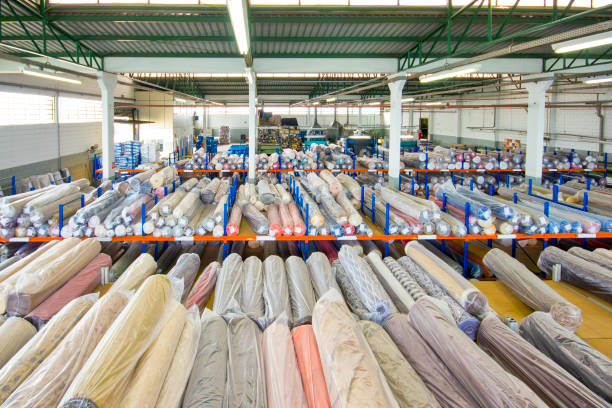
Introduction
Fashion is an active market and the direction of an industry which depends on the consumers, seasons, and the external climate. A fast-changing fabric of this industry is the supply chain – system that creates garments and accessories from fibers to finished products. When it comes to fabrication, distribution, and even consumer end, fashion supply chain goes through several phases each of which presents its own complexities and possibilities supply chain fashion industry.
The modern consumer has become increasingly concerned with sustainable energy production, and this has raised pressure on the industry to respond to the change. It goes further in dissecting fashion’s supply chain to present the current state; the issues observed; the strategies used towards constructing a stable supply chain.
Understanding the Fashion Supply Chain

The fashion supply chain can therefore be defined as all the procedures starting from conception of a product or a fashion accessory and right up to its delivery. It involves a series of interconnected stages, which typically include:
- Design and Product Development: The first process in the fashion item’s lifecycle is ideation where designers come up with and draw ideas for the new fashion goods. Its activities include analysis of trends, selection of materials, and creation of prototypes.
- Sourcing: The next activity is sourcing the materials such as fabric, zipper, buttons and other accessories that are used in production of a clothing item. During this stage, it is necessary to cooperate with suppliers to get the necessary materials of high quality at a lower price.
- Manufacturing: The application process follows gathering of materials and the manufacturing process starts. This may occur in house or through outsourcing through other firms commonly in regions where labor is cheap. Principle activities include garment making/cutting, sewing and joining of garments.
- Logistics and Distribution: :Following production, the products are shipped to distribution outlets and a variety of stores. This has put emphasis on efficiency when it comes to delivery since most of the clothes today are fast-fashion.
- Retail and Sales: The last step is ensuring that the products reach the target consumers through physical outlets such as stores or through online stores or through direct selling.
Key Trends Shaping the Fashion Supply Chain

Fashioning industry is ever growing with several currents effecting the supply chain some of which include the following. It is therefore important for any organization or firm which wants to sustain itself in a changing environment to understand these trends.
1. Sustainability and Ethical Sourcing
Of all the trends now prevalent in the fashion supply chain, sustainable development is one of the most impactful. Today’s societies will not accept endless exploitation of resources, and consumers want to be sure that the materials used for products manufacturing are obtained legally and sustainably.
- Eco-Friendly Fabrics: Companies are putting efforts into embracing ecofriendly materials for instance; organic cotton, recycled polyester and biodegradable fabrics. This change lowers the environmental pollution and is a plus for consumers concerned with the environment.
- Supply Chain Transparency: One way through which firms are implementing blockchain technology is in building trust with their clients through showing the pedigree of their products. This makes it easy for the public to verify that ethical practices are used when making the decisions.
2. Digital Transformation and Technology Integration
The fashion industry is currently shifting to digital to advance its supply chain management solutions. New technologies such as AI, IoT, and data analysis are making it easy for organizations to cut costs, enhance efficiency, and make good decisions.
- Artificial Intelligence (AI): Currently, AI tools are applied to demand forecasting, inventory management, and it is still surprising but even in fashion designing. It assists brands avoid making unnecessary productions and helps them reduce waste production.
- 3D Printing: This induces on demand production of parts in a shorter time than normal and with minimized wastage. It also allows customers to get products according to their preference a factor that has seen the sale of customized fashion skyrocket.
- Smart Warehousing: Interconnectivity of things and automation is revolutionalising warehousing to provide real-time tracking of stock and timely delivery of orders.
3. Fast Fashion vs. Slow Fashion
Fast fashion is, therefore, a partial credit for changing the fashion industry by bringing fashionable designs at economical processes. Nevertheless, this business model has been evaluated negatively because it encourages the use of resources and creates waste. In response, there is an increasing trend toward what is known as slow fashion to minimize the demand for clothing products that are produced in excess.
- Shorter Lead Times: Currently, brands like Zara and H&M have proved to be very effective in one thing—that is fast fashion which takes a few weeks to complete a cycle of design, production, and display of new products on the market.
- Emphasis on Quality: Slow fashion then aims at elegance, superior quality, and sustainability in production and is on the market targeting people in search of durable clothes.
Challenges in the Fashion Supply Chain

Fashion supply chain presents manifold opportunities; at the same time, it presents various threats as well. If not well handled, these challenges will lead to operational disruption, increased costs, and affect the brands image.
1. Supply Chain Disruptions
Some global factors for instance the COVID 19 outbreaks has pointed out the weaknesses in the fashion supply chain. Production halts, extended logistics timeframe, and supply chain disruption have been some bottlenecks.
- Reshoring and Nearshoring: To minimize the risks, the pressure is observed while shifting production closer to the brands’ home markets. This strategy affects the firm in that it minimizes reliance on foreign suppliers something that shortens the lead time.
- Diversifying Suppliers: Firms have also been adjusting the sources from which they acquire the material to avoid a monopoly of one supplier. This increases adaptability and robustness against disruptions for this approach.
2. Cost Pressures
Today’s fashion industry faces a lot of competition, and people want clothes and other accessories at a relatively cheap price. Nonetheless, increasing cost of labor, introduction of tariffs as well as transportation costs are some of the challenges facing the company’s profitability.
- Cost Optimization: To reduce expenses, brands have to look for ways like automation of production lines and supply chain management and minimization of inventory.
- Outsourcing: Although outsourcing to low cost country still prevails much, it has to be done while considering the ethical implications for cost cutting measures.
3. Sustainability Compliance
Among these pressures, the latest one is the pressure that comes as a result of stricter regulation on the impact the fashion companies pose on the environment. Penalties may include fines, legal repercussions and the worst, embarrassment through damaging the company’s image.
- Green Certifications: Purchasing credentials such as GOTS (Global Organic Textile Standard) or Fair Trade will prove a company’s intent in sustainability.
- Circular Fashion: Thus, circular fashion entails aspects of a product design that consider recyclability and end of life disposal. Companies such as Patagonia are making good attempts with their take-back programmes and repairing facilities.
Strategies for Building a Resilient Fashion Supply Chain

To overcome the difficulties and maximize the benefits in the fashion supply chain, the companies should use new approaches. Here are some approaches to consider:
1. Investing in Technology
ESD plays a critical role in supply chain management in the sense that digital solutions can truly optimize target assets’ visibility and operational performance. RFID tags, blockchain, and AI-based analytics help minimize stockouts, assess the performance of suppliers, and recognize trends in customer’s shopping behavior.
2. Sustainable Sourcing
Sustainability should be pursued by including only certified suppliers in the partner list and using environmentally friendly materials. This can be done by developing long term cooperation with suppliers that have similar sustainable concerns to guarantee a continuous supply of sustainable goods.
3. Agile Supply Chain Management
Organizational agility of supply chain makes it possible for fashion firms to adapt to dynamic market environment. This is about fast product turnover, integration of manufacture and assembly, or even changeability of the distribution system.
- Just-in-Time (JIT): According to the concept of JIT manufacturing, work in progress and inventory are eliminated on the shop floor. It also enables brand managers or companies to easily respond to the market needs of consumers.
- Demand-Driven Planning: On the same note, when it comes to consumer market predictions the use of data analytics will ensure that there is no overstocking.
The Future of the Fashion Supply Chain

Exploring the Fashion Supply Chain: The bright future of the supply chain in the fashion industry backed up by advancement in technologies, sustainability, and the customer. Here are some trends to watch:
- Digital Fashion and Virtual Try-Ons: The virtual fashion shows and AR try-ons have leap forward and people can easily shop from the comfort of their homes. These technologies not only help customers become more interacted but also make more savings in environmental samples.
- Circular Economy: The consciousness towards a circular economy will remain on the rise; thus we will see more brands investing in recycling and upcycling. Efficient use of textiles will be promoted by this shift so that consumer adopt more sustainable fashion conscious products.
- On-Demand Manufacturing: When customization and personalization are making a difference, on-demand manufacturing will be more effective. (This approach of production minimizes wastage and ensures that goods are produced only when a market for his or her products exists).
Conclusion
To understand fashion supply chain is to understand a crucial aspect within the fashion industry and system. The pressures of customers BAMLD demand sustainability and transparency alongside faster and more efficient delivery services redefining the fashion industries’ supply chain. With technology adoption, responsible sourcing, and supply chain sustainability, these and many more challenges along this dynamic maze can be turned into major opportunities.



